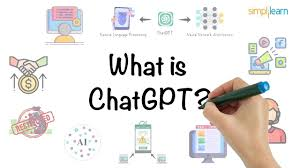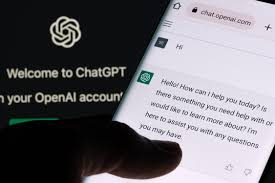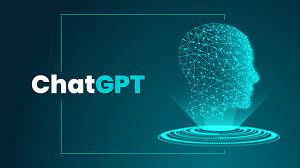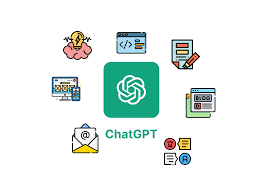ChatGPT is an artificial intelligence (AI) chatbot that uses natural language processing to create humanlike conversational dialogue. The language model can respond to questions and compose various written content, including articles, social media posts, essays, code and emails.
ChatGPT is a form of generative AI – a tool that lets users enter prompts to receive humanlike images, text or videos that are created by AI.
ChatGPT is similar to the automated chat services found on customer service websites, as people can ask it questions or request clarification to ChatGPT’s replies. The GPT stands for “Generative Pre-trained Transformer,” which refers to how ChatGPT processes requests and formulates responses. ChatGPT is trained with reinforcement learning through human feedback and reward models that rank the best responses. This feedback helps augment ChatGPT with machine learning to improve future responses.
Who created ChatGPT?
OpenAI – an artificial intelligence research company — created ChatGPT and launched the tool in November 2022. It was founded by a group of entrepreneurs and researchers including Elon Musk and Sam Altman in 2015. OpenAI is backed by several investors, with Microsoft being the most notable. OpenAI also created Dall-E, an AI text-to-art generator.
How does ChatGPT work?
ChatGPT works through its Generative Pre-trained Transformer, which uses specialized algorithms to find patterns within data sequences. ChatGPT originally used the GPT-3 large language model, a neural network machine learning model and the third generation of Generative Pre-trained Transformer. The transformer pulls from a significant amount of data to formulate a response.
ChatGPT now uses the GPT-3.5 model that includes a fine-tuning process for its algorithm. ChatGPT Plus uses GPT-4, which offers a faster response time and internet plugins. GPT-4 can also handle more complex tasks compared with previous models, such as describing photos, generating captions for images and creating more detailed responses up to 25,000 words.
ChatGPT uses deep learning, a subset of machine learning, to produce humanlike text through transformer neural networks. The transformer predicts text — including the next word, sentence or paragraph — based on its training data’s typical sequence.
Training begins with generic data, then moves to more tailored data for a specific task. ChatGPT was trained with online text to learn the human language, and then it used transcripts to learn the basics of conversations.
What kinds of questions can users ask ChatGPT?
Users can ask ChatGPT a variety of questions, including simple or more complex questions, such as, “What is the meaning of life?” or “What year did New York become a state?” ChatGPT is proficient with STEM disciplines and can debug or write code. There is no limitation to the types of questions to ask ChatGPT. However, ChatGPT uses data up to the year 2021, so it has no knowledge of events and data past that year. And since it is a conversational chatbot, users can ask for more information or ask it to try again when generating text.
How are people using ChatGPT?
ChatGPT is versatile and can be used for more than human conversations. People have used ChatGPT to do the following:
- Code computer programs and check for bugs in code.
- Compose music.
- Draft emails.
- Summarize articles, podcasts or presentations.
- Script social media posts.
- Create titles for articles.
- Solve math problems.
- Discover keywords for search engine optimization.
- Create articles, blog posts and quizzes for websites.
- Reword existing content for a different medium, such as a presentation transcript for a blog post.
- Formulate product descriptions.
- Play games.
- Assist with job searches, including writing resumes and cover letters.
- Ask trivia questions.
- Describe complex topics more simply.
- Write video scripts.
- Research markets for products.
- Generate art.
Unlike other chatbots, ChatGPT can remember various questions to continue the conversation in a more fluid manner.
In August 2023, OpenAI announced an enterprise version of ChatGPT. The enterprise version offers the higher-speed GPT-4 model with longer context windows, customization options and data analysis. This model of ChatGPT does not share data outside the organization.
What are the benefits of ChatGPT?
Businesses and users are still exploring the benefits of ChatGPT as the program continues to evolve. Some benefits include the following:
- Efficiency. AI-powered chatbots can handle routine and repetitive tasks, which can free up employees to focus on more complex and strategic responsibilities.
- Cost savings. Using AI chatbots can be more cost-effective than hiring and training additional employees.
- Improved content quality. Writers can use ChatGPT to improve grammatical or contextual errors or to help brainstorm ideas for content. Employees can take ordinary text and ask to improve its language or add expressions.
- Education and training. ChatGPT can help provide explanations on more complex topics to help serve as a virtual tutor. Users can also ask for guides and any needed clarification on responses.
- Better response time. ChatGPT provides instant responses, which reduces wait times for users seeking assistance.
- Increased availability. AI models are available around the clock to provide continuous support and assistance.
- Multilingual support. ChatGPT can communicate in multiple languages or provide translations for businesses with global audiences.
- Personalization. AI chatbots can tailor responses to the user’s preferences and behaviors based on previous interactions.
- Scalability. ChatGPT can handle many users simultaneously, which is beneficial for applications with high user engagement.
- Natural language understanding. ChatGPT understands and generates humanlike text, so it is useful for tasks such as generating content, answering questions, engaging in conversations and providing explanations.
- Digital accessibility. ChatGPT and other AI chatbots can assist individuals with disabilities by providing text-based interactions, which can be easier to navigate than other interfaces.
What are the limitations of ChatGPT? How accurate is it?
Some limitations of ChatGPT include the following:
- It does not fully understand the complexity of human language. ChatGPT is trained to generate words based on input. Because of this, responses might seem shallow and lack true insight.
- Lack of knowledge for data and events after 2021. The training data ends with 2021 content. ChatGPT can provide incorrect information based on the data from which it pulls. If ChatGPT does not fully understand the query, it might also provide an inaccurate response. ChatGPT is still being trained, so feedback is recommended when an answer is incorrect.
- Responses can sound like a machine and unnatural. Since ChatGPT predicts the next word, it can overuse words such as the or and. Because of this, people still need to review and edit content to make it flow more naturally, like human writing.
- It summarizes but does not cite sources. ChatGPT does not provide analysis or insight into any data or statistics. ChatGPT might provide statistics but no real commentary on what these statistics mean or how they relate to the topic.
- It cannot understand sarcasm and irony. ChatGPT is based on a data set of text.
- It might focus on the wrong part of a question and not be able to shift. For example, if you ask ChatGPT, “Does a horse make a good pet based on its size?” and then ask it, “What about a cat?” ChatGPT might focus solely on the size of the animal versus giving information about having the animal as a pet. ChatGPT is not divergent and cannot shift its answer to cover multiple questions in a single response.
Human trainers provide conversations and rank the responses. These reward models help determine the best answers. To keep training the chatbot, users can upvote or downvote its response by clicking on thumbs-up or thumbs-down icons beside the answer. Users can also provide additional written feedback to improve and fine-tune future dialogue.
For the manufactures such as our company Zhejiang Huaxiajie Macromolecule Building Material Co.,ltd,we can use the ChatGPT to search the customers’ issues and use other tools together to check the detail; We can use the ChatGPT to write the promotional letter and describe the detail with the professional words.We can use ChatGPT to do so many things.
Post time: Oct-30-2023




